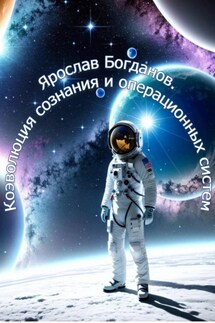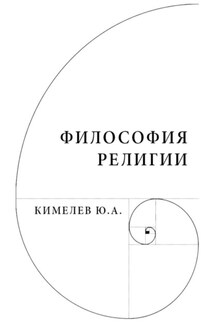Co-evolution of consciousness and operating systems (Коэволюция сознания и операционных систем) - страница 7
Perhaps only an analogy can help illustrate its nature – an analogy with gravity. Gravity may be perceived as a force, but it is more accurately understood as a property of curved space-time. Similarly, love is not a force but a property – a property of the continuum in which the laws of psychic activity operate.
Additionally, love might be defined as an anti-entropic force or as the law of attraction for meanings.
Love, understood as the life activity of meanings – with their affinity, complementarity, and reproduction – is revealed to us daily at the personal level of organization. Personality is the external side of the organism of meanings. In the interaction of these organisms, we perceive love.
This kind of connection extends beyond interactions between individual thoughts – it also shapes other forms of meaningful relationships, such as love for one’s homeland, for God, or for a scientific idea. All of this is love – a value for humanity that surpasses life itself. One cannot help but recall the words of the Apostle Paul about love, with their many forms of beauty: the beauty of prophecy, of mathematical formulas, of poetic expression, and of moral sentiment.
It is, of course, possible to try to exclude love as a term when describing the affinity of meanings by applying terminology from information theory, especially since, when discussing meanings, such an approach naturally suggests itself. In this case, one could describe the interaction of meanings using terms like semantic connections, signal connections, or informational connections. Love could then be assigned a specific field within the theory of meanings – perhaps as a particular manifestation of meaningful activity within the framework of psychic activity, characterized by its inherent emotional reactions.
It is also possible to exclude love entirely from the realm of meaningful activity, to psychologize this feeling and classify it as a subjective entity, leaving unresolved the question of why this feeling, among the many experienced by humans, remains the most important. Why are most human aspirations tied to it?
Alternatively, one could biologize or psychologize the term, interpreting it within existing physiological or humanitarian frameworks or cultural traditions (such as literature or art). However, this would likely ignore the fact that love pertains specifically to human activity – it is fundamentally a rational activity.
Describing love as a particular case of informational interactions is, in my view, not entirely accurate, though it is occasionally appropriate. It could be interpreted as a conscious affinity of meanings, or the experience of information – a combination of signals integrated into the structure of the self, transforming external stimuli into internal experience, and so on. Other, more or less precise formulations could also be found, reflecting important properties of love or significant consequences arising from it.
The informational approach is both productive and indispensable in describing the life of meanings. However, it is insufficient without considering the concept of love, especially when discussing the life activity of meanings and self-sustaining meaningful entities with internal mechanisms for maintaining their non-equilibrium states. Thus, love can be relocated from the realm of poetry to the realm of science by being incorporated as a concept within the theory of information. This is valid if we consider the achievements of human genius to be equivalent and evolutionarily systematic. Drawing on the revelations of prophets, the words of the Apostle Paul about love, and the discoveries of scientists at the dawn of cybernetics, we might suggest that concepts describing phenomena of the same order – though expressed in disparate semantic systems – can evolve into scientific and modern interpretations. This, in my view, applies to a multidimensional term like love as well.







